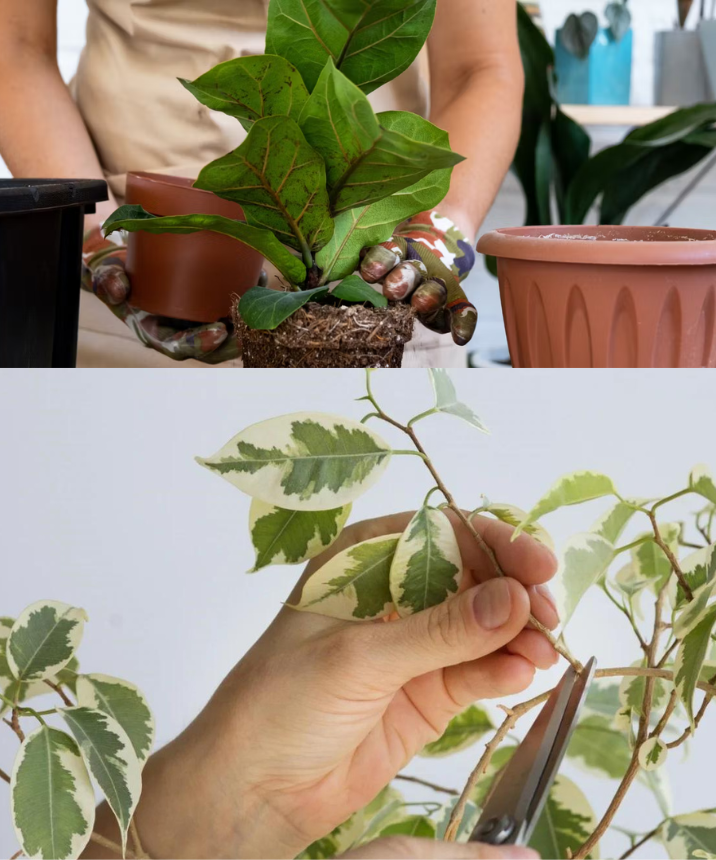Ficus Benjamina, also known as weeping fig or Indian laurel, is a popular indoor plant appreciated for its elegant foliage and easy care. However, to maintain its health and shape, periodic pruning is essential. In this article, we’ll explore how to prune Ficus Benjamina and when it’s appropriate to perform more severe pruning, following expert gardening tips.
How to Prune Ficus Benjamina:
- Removing Dead or Damaged Branches: Start pruning by removing any dead, diseased, or damaged branches. Use sharp and clean pruning tools to make clean and precise cuts.
- Reducing Branch Length: If your Ficus Benjamina is becoming too large or unruly, you can reduce the length of the longer branches to give it a more compact and aesthetic shape. Cut the branches just above a node or lateral bud to encourage denser growth.
- Removing Crossed or Entangled Branches: Look for and remove branches that are crossing or entangled, as they can interfere with air circulation and light penetration, eventually causing health problems for the plant.
- Clearing the Interior of the Plant: To encourage air circulation and light penetration, it’s important to remove excess branches and foliage from the interior of the plant. This also helps prevent pests and diseases.
When to Perform Severe Pruning:
- Spring: Spring is generally the best time to perform more severe pruning on Ficus Benjamina. During this time, the plant is experiencing active growth and will recover more quickly from pruning.
- After Flowering: If your Ficus Benjamina has bloomed, you can prune it after flowering to remove any excessive growth and shape it before its more vigorous growth period begins.
- Every 1-2 Years: To maintain the desired shape and size of your Ficus Benjamina, consider performing more severe pruning every 1-2 years, especially if the plant has grown large or become unruly.
Always remember to use sharp and clean pruning tools to avoid damaging the plant, and disinfect the tools between cuts if you’re working on a diseased plant. With these tips, you’ll be able to prune your Ficus Benjamina effectively and keep it healthy and beautiful for many years to come.
